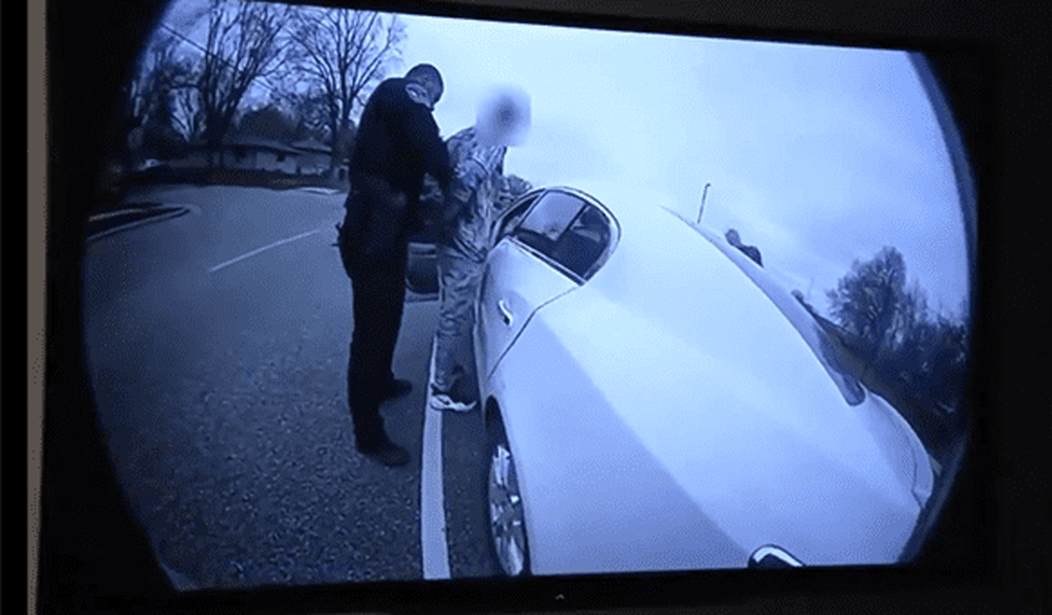Former Brooklyn Center Minnesota police officer Kim Potter was taken into custody on Wednesday afternoon, charged with Second Degree Manslaughter in the shooting death of Daunte Wright. According to NBC News:
Kim Potter, a 26-year veteran of the Brooklyn Center Police Department, was taken into custody about 11:30 a.m. at the Bureau of Criminal Apprehension in St. Paul, officials said.
She will be charged with second-degree manslaughter in connection with Wright’s death, Washington County Attorney Pete Orput announced. The charge carries a maximum penalty of 10 years behind bars.
Second-degree manslaughter under Minnesota law is one of the charges that was filed against former Minneapolis Police Officer Derek Chauvin, now on trial in connection with the in-custody death of George Floyd.
Under Minnesota law, Second Degree Manslaughter is defined as follows:
A person who causes the death of another by any of the following means is guilty of manslaughter in the second degree and may be sentenced to imprisonment for not more than ten years or to payment of a fine of not more than $20,000, or both:
(1) by the person’s culpable negligence whereby the person creates an unreasonable risk, and consciously takes chances of causing death or great bodily harm to another.
As a general matter, Potter could be convicted of the charge each of the following was proven by evidence beyond a reasonable doubt:
- Her conduct in withdrawing her service weapon was “culpably negligent”.
- That negligence created an unreasonable risk, and
- In doing so she CONSCIOUSLY took the chance of causing death or great bodily harm.
Maybe because of my capitalization and emphasis you might detect a hint of where I think there might be a problem in the case against her.
How is the case against Potter different than the case against Chauvin and Mohammed Noor, convicted last year in the shooting death of innocent citizen Justine Damond?
In both of those instances, the conduct attributed to each officer which resulted in the death of the victim was intentional.
Chauvin intended to maintain Floyd in the prone position on the pavement with his hands cuffed behind his back, all while applying pressure with bodyweight to keep Floyd in place.
Noor intended to pull his service weapon, point it across the chest of his partner in the driver’s side seat, and shoot out the driver’s side window at Damond believing her to be an approaching threat.
But Potter at no point in time — based on what we know at this point — ever intended to pull her service weapon and discharge it in a use of deadly force against the person of Wright. The objective expression of her intention captured on audio and heard by others was to use non-deadly force against Wright.
This will likely be contested on the basis that her “mistake of fact” is a defense to criminal liability.
For a “mistake of fact” defense to be successful, the mistake in question must be “reasonable”. In Potter’s case, was it “reasonable” under the circumstances for her to mistakenly pull her service revolver when in her mind she was acting with the intention of pulling her taser?
This NBC News story addresses this question, including a comparison between the physical features of the Glock 17 handgun and a typical taser carried by police officers — it is not yet public knowledge the model of the Taser that Potter was carrying.
The Glock pistol that Potter was wielding when she fired the fatal shot at Wright on Sunday as he allegedly attempted to flee is black metal and almost a pound heavier than the neon-colored plastic Taser she may have believed she was brandishing as she was caught on a video yelling, “Taser! Taser! Taser!”
“A Glock is a very lightweight handgun,” said Sgt. Betsy Brantner Smith, spokeswoman for the National Police Association and a retired 29-year veteran of the Naperville Police Department in Illinois. “But a Taser is heavier than you think.”
A Glock and a Taser do not feel the same in your hand — and in some respects, the design of the Taser is purposely so.
But I want to give a H/T here to my friend Jazz Shaw over at Hotair who was the first I saw to raise the issue of “slips and capture” and how it might play into the analysis of Potter’s mistake.
What is “slips and capture”? I’m guessing that is a very common question, and one we will hear more about in the weeks and months ahead. I have had very limited exposure to the concept, but it was quite some time ago.
When Tasers became a relatively common non-lethal use of force device, training almost always involves having the officer carry his/her firearm on their “dominant” side and the Taser on the “weaker” side. A right-handed officer wears their firearm in a holster on their right hip, and if a Taser is carried it is on the left hip.
But police officers routinely engage in “range practice” where they are expected to remain proficient in being able to use their firearm. A significant amount of this training involves being able to draw the firearm from the holster and discharge one or more rounds rapidly and on target while maintaining complete control of the weapon.
“In addition to their guns and the Tasers, they carry pepper spray, a baton, handcuffs, sometimes a sap [blackjack], gloves, you name it,” Skogan said. “But when they receive training, the emphasis is on guns. Firearms are your best friend.”
As a result, when an officer is in a potentially dangerous situation, their instinct is to reach for their gun rather than the Taser, the experts said.
My earlier experience with the “slips and capture” concept was from very limited exposure to a “Human Factors” expert — a discipline that I derided with great pleasure early in my legal career.
“Capture” is the term used for when the officer’s attention is “captured” by an outside distraction. In the same moment, a high level of discernment is necessary to engage in a specific and precise form of conduct — in this case, making an intentional move to grab the Taser rather than their handgun. But the distraction takes away from the ability to engage in the higher-ordered thinking at a specific moment in time when needed, and the actor — in this case Potter — “slips” in the processing of what she needs to do and instead follows a well-practiced course of activity without the brain making an appropriate “attention check” before an action takes place that cannot be recalled. The action which is unintentionally taken is normally that which is the most habitually reinforced by practice — i.e., drawing her handgun.
Was that “negligence”? Was it “conscious”? Or was it just a matter of how our brains work under stress?















Join the conversation as a VIP Member